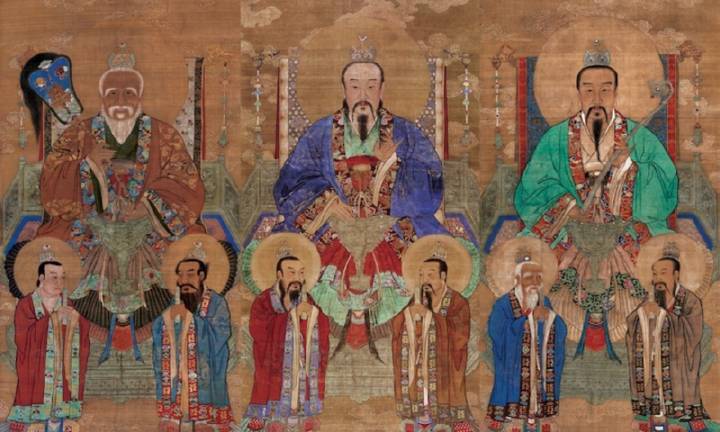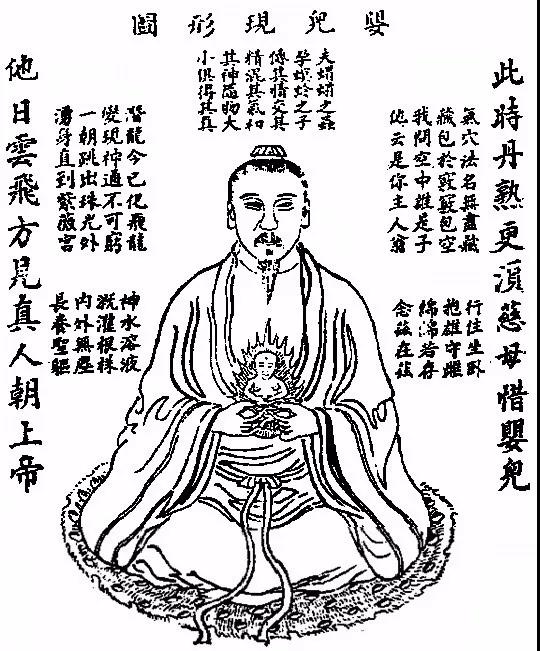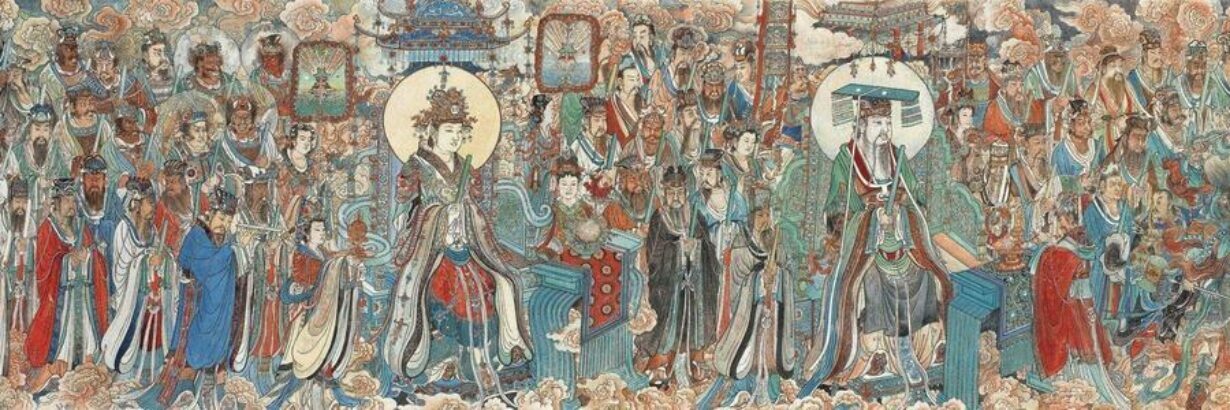If you have decided to become a practicing Daoist, you should learn and internalize the Daoist doctrine. It is important to keep in mind what we expect of the practice. There are many methods and ways of Daoist practice. Whether you live like a monk, have family and work or prioritize other things in life, you can always cultivate 道 Dao.
Daoist practice begins with cultivation in the heart. If you cultivate your character, take a calm attitude towards things and do good for your environment, you are already taking the first step in the right direction. Everyone has strengths and weaknesses. We should know them well and find a way to help others with our skills and turn our weaknesses into strengths. One should try to get rid of clinging to cravings and not interfere in the course of things. Following the principle of “Wu Wei” 无为 ,which Lao Zi explained in his classic `Dao De Jing` over two thousand years ago. The meaning is simple: non-action. In other words acting without any means. It is not easy to apply this in our daily life but if we strive to take a little step every day and go through our life with awareness, we can progress on our path naturally.
Not opposing the natural course of things, letting them happen and do nothing to interfere. It is important to be patient with yourself and others, sincere and confident. Developing trust in our path is an important part of Daoist training. Acceptance of coincidences and understanding that we always have our destiny in our own hands.

The three treasures of the Dao
A classic text says: a Daoist has three treasures that are sacred to him, that he respects and protects.
Daoist practice begins with recognizing and learning the principles of Dao. Once you understand the principles, you can start cultivating the Dao. When you have cultivated the Dao, you can begin to live the Dao and let the Dao live through you. Each of the three stages of daoist practice applies three treasures, so called 三宝San Bao. In religious Daoism the 三宝San Bao are represented by the 三清San Qing, the three clearities, the highest deities of the Daoist pantheon.
The three treasures to learn the Dao
道Dao
经Jing
师Shi
The meaning of the three characters:
道Dao, is everything. The beginning of heaven and earth and appearance of the ten thousand things. Dao is in every being. Often translated as a path, it is much more than just a path to be followed. The character 道 contains many secrets and refers to the basic principles of Daoist practice.
经Jing, is the teachings that we learn and experience through the study of classical scriptures. These writings are often difficult to understand, especially if we come from a different culture. However, since texts have always been written in a metaphorical way, understanding of the meanings of these metaphors grows over time and / or a teacher transmitting them.
师Shi, is the master who shows you the way, gives guidance and teaches you the Daoist practices. In the event of difficulties, he offers solutions until you are able to walk the path yourself.

The three treasures of cultivating Dao
精Jing
气Qi
神Shen
The meaning of the three characters:
精Jing is the vitality, the essence that is within us. It is the seed of life. The body of flesh and blood. When cultivating, weneed to ensure that the vitality is not lost.
气Qi is energy, activity and change. Speech and perception. It is the use of the body, the gateway to life and death.
神Shen is the spirit, the light in the eyes, the thought in the heart. It is the silent mover, the driver of vitality and energy, the spiritual force.
A classic says: The essence transforms into energy, the energy transforms into the spirit, the spirit changes into emptiness, the emptiness becomes one with the Dao.
In internal practice, we follow this principle and cultivate essence, qi and spirit. Even if the order of cultivation from raw to fine exists, the three treasures never exist independently of one another.
The three treasures to live the Dao
慈Ci
俭Jian
让Rang
The meaning of the three characters:
慈Ci is kindness, humanity and compassion. Compassion for other people. Be humble and help others when we can without expecting anything in return.
俭Jian is simplicity. To be satisfied with that what you have and not to be jealous of others, because gain or loss cloud the mind and are not permanent. It can happen at any time that you suddenly lose everything you own and if you attach to things too much, it affects our senses.
让Rang is giving in, letting others go first, being calm about things and not putting yourself above others.
A Daoist classic says: If you want to go the way of the immortals, you should first go the way of men. If you cannot walk the path of men, how do you want to walk the path of the immortals?
Therefore, we should always think about how our actions may affect others or, in the worst case, harm them. When we are in a conflict or having a fight with someone, we often see things only from our point of view. However, we should remain optimistic and understand the others and their views. The wiser gives in.

Three treasures and Nei Gong
The three treasures of cultivating Dao are closely related to internal practice. 内功Nei Gong is a method that is practiced in silence without moving the body, therefore it is called internal practice. 内Nei means inside and 功Gong means work. Daoist internal practice includes standing, sitting and lying methods. In any way we can cultivate vitality and energy with the help of our spirit. Standing practices, so called 站桩Zhan Zhuang exercise is also practiced as 气功Qi Gong in different positions and has great health benefits for the practitioner. The sitting practice we do with crossed legs, in half the lotus position , in full lotus position or other ways. The sitting method benefits the practitioner with a relaxed but upright body position which supports the stillness of heart and clearness of mind. The lying method is also called sleeping meditation and is a way of using the time we normally sleep and rest to practice and cultivate Dao. In various positions we allow the body to completely relax and enter a trance like state of mind. Over time we will be able to use the mind to cultivate while the body is asleep and rests.
There are generally two types of internal practice.
1. Mind-fullness practice
This type of internal practice can be used to understand things, put oneself into a situation or a problem in order to analyze them for a better understanding. For example: Mental blockages which are rooting in early childhood experiences; you can get to the bottom of things to see why it developed like this and find a solution to solve the issues. You use your own mind to bring everything to light. You start seeing hings with clearer eyes. Once you have penetrated things and solved the issues, you discard them to gradually empty your mind and throw off ballast. You only use your mind to dig deeper into things, to penetrate them and to understand them. So you can get a clear picture to overcome your weaknesses and fears.
2. Emptying practice
With this practice you try to free yourself from all thoughts and get a clear and pure mind. The practitioner works to reduce and dissolve the flow of thoughts by initially distinguishing between thoughts that are “worthwhile”, or those that should be discarded immediately. This is called creating a formal judgment. Gradually the countless streams of thought become less and less until you enter silence. The practitioner begins to work with his mind by training it. Structured thinking can give you very high intellectual abilities. We can start with the mind-fullness practice first and think of a “thing”, think ahead and back and let it develop until you get a result. If it has a clear meaning, the exercise was effective. Thinking is not bound to space and time, but free from all barriers. Once the mind is trained, one tries to reduce the mental attachments and the seemingly endless stream of thoughts. This is called stopping useless thoughts. By making a formal judgment and declaring the thought to be right or wrong and telling him: “up to here and no further”, you immediately stop and do not allow the brooding to go on forever.
A first method of emptying practice is called „Lock the Monkey in the Heart“. Focusing the mind and counting each breath. Over time the „Mind Monkey“ will stop jumping from one idea to the next within seconds and our mind clears up.
When silence peaks, it creates movement.
Written and Translated by Daoist Liu Cheng Yong, German Daoist Association.

